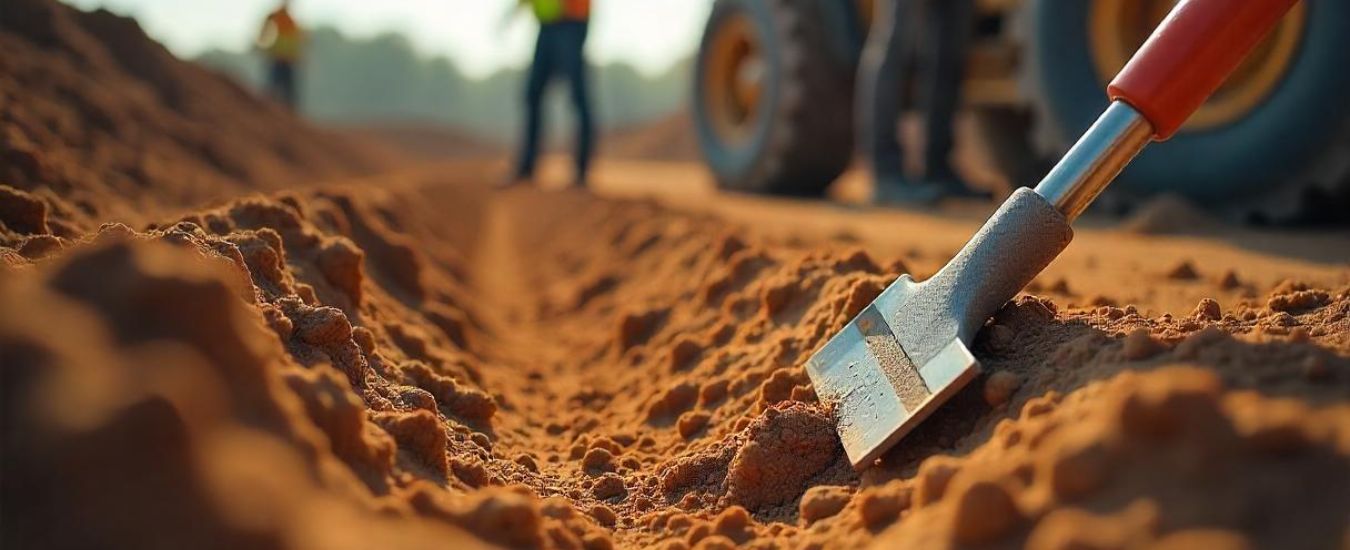Silt soil isn’t the worst kind to build on—but it’s definitely not the best without preparation. With advice, proper soil stabilization, and foundation design, it can still Be a stable construction. But if you skip testinit’sd proceed blindly, you might end up paying far more later on.
When it comes to building anything—from a small house to a large commercial building—soil is the one element that literally supports everything. And among the various types, silt soil often gets a mixed reaction. Some say it’s dangerous; others say it can be workable with the proper technique. So what’s the truth?
Importance of Soil in Structural Engineering
Soil isn’t just “dirt.” It plays a crucial role in how strong, stable, and long-lasting your construction project will be. Soil types influence everything from foundation design to drainage systems.
Common Types of Soil Used in Construction
- Clay Soil – sticky, cohesive, but poor drainage.
- Sand Soil has good drainage but lacks cohesion.
- Silt Soil – somewhere in between.
- Gravel and Loam – usually more balanced and stable.
What is Silt Soil?
Definition of Silt Soil
Silt soil consists of fine particles that are smaller than sand but larger than clay. It feels silky to the touch when wet and powdery when dry.
Appearance and Texture
It typically appears light brown or grey, and when you rub it between your fingers, it feels soft and floury. That’s due to its fine-grained texture.
Properties of Silt Soil
Particle Size and Texture
It contains particles between 0.002 mm and 0.05 mm. It lies right between sand and clay on the grain size scale.
Water Retention Capacity
Silt holds more water than sand, making it suitable for farming but not so great for construction if unmanaged.
Plasticity and Cohesion
Unlike clay, silt soil has low plasticity and moderate cohesion, meaning it can hold together under pressure—but not always reliably.
Permeability and Drainage
Its permeability is low, which means water drains slowly, leading to moisture retention problems under structures.
Shrink-Swell Behavior
It expands when wet and shrinks when dry, which can lead to foundation cracks and uneven settlement.
Advantages of Silt Soil in Construction
Despite its drawbacks, silt soil has a few upsides:
- Moderate Water Retention is helpful in landscaping or moisture-sensitive construction.
- Easy to Work With due to its soft texture.
- Readily Available, especially in river valleys and flood plains.
Disadvantages of Silt Soil in Construction
Low Bearing Capacity
Because of its fine particles and moisture retention, silt struggles under structural load.
High Moisture Sensitivity
It’s extremely vulnerable during rainy seasons or flooding. It becomes mushy and loses structure quickly.
Poor Load-Bearing Properties
Compared to gravel or loam, silt can handle heavy construction loads without soil treatment.
Prone to Erosion
What’s easily eroded? Let’s water, especially if it’s on a slope or unprotected during construction.
How Does Silt Soil Affect Foundation Stability?
When you build over silt soil, think of the “fire” trial settlement increases.
Foundation Design for Fine-Grained Soils
It often requires deeper footings, pile foundations, or raft slabs to distribute the load evenly.
Settlement Risks
Due to poor drainage and compaction, there’s a risk of sinking or cracking over time.
When is Soil Stabilization Necessary?
Always. If you’re building on silt, soil stabilization with lime, cement, or geogrids is a must.
Improving the Engineering Properties of Silt Soil
Soil Compaction Techniques
Rolling, tamping, and vibrating are effective methods to increase soil density.
Adding Admixtures and Binders
Adding lime, cement, or even fly ash can significantly improve load-bearing capacity.
Use of Geotextiles
These synthetic fabThat’selp improve stability and drainage and reduce erosion.
Drainage Improvements
Installing sub-surface drainage systems can reduce water accumulation and soil movement.
Testing Silt Soil Before Construction
Standard Geotechnical Soil Testing
You’ll want to conduct:
- Moisture Content Test
- Plasticity Index Test
- Permeability Test
- Standard Proctor Test (for compaction)
Case Studies of Silt Soil in Real-World Projects
Success Stories
Some residential projects in coastal India and river valley areas have successfully used silt soil after proper treatment and design planning.
Failures Due to Improper Use
Landslides and foundation sinking incidents in poorly managed sites prove that ignoring soil reports is a costly mistake.
Best Practices When Building on Silt Soil
- Hire a soil engineer to test and analyze the site.
- Opt for deep foundations if the topsoil is highly silty.
- Always stabilize the soil using chemical or mechanical methods.
- Avoid building in low-lying flood-prone areas without advanced drainage.
Silt Soil vs Other Soils – Quick Comparison Table
| Property | Sand Soil | Clay Soil | Silt Soil | Loam Soil |
|---|---|---|---|---|
| Particle Size | Coarse | Very Fine | Fine | Mixed |
| Drainage | High | Low | Moderate | Good |
| Plasticity | Low | High | Medium | Low |
| Load Bearing | Medium | Low | Low | High |
FAQs
Can you build a house on silt soil?
Yes, but soil stabilization and proper foundation design are required to avoid settlement issues.
How can you improve silt soil for foundations?
By compacting the soil and adding stabilizers like lime, cement, or fly ash.
What happens if silt soil gets there?
It loses its strength, becomes mushy, and can lead to foundation failures.
Is silt soil better than clay for construction?
Silt drains slightly better than clay but has lower plasticity. Both need treatment before building.
What foundation type is best for silt soil?
A raft foundation or pile foundation is generally recommended for silty sites.

